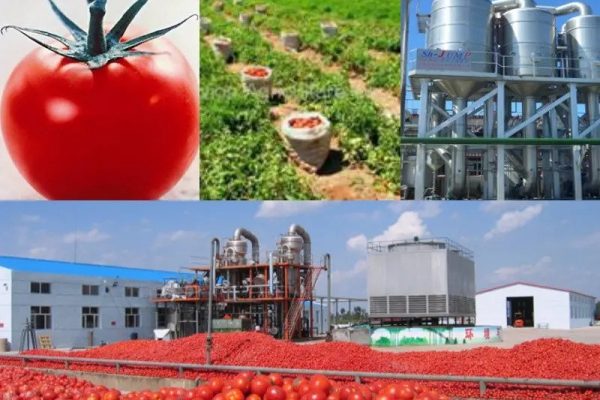Project Report For Tomato Ketchup Plant
Introduction
Project report for Tomato Ketchup Plant is as follows.
Tomato ketchup, a famous condiment across the world, does not originate straight from the “tomato ketchup plant.” It is instead obtained from tomatoes, which are the fruits of the plant Solanum lycopersicum. However, I can tell you about tomato trees and how tomatoes are processed to produce ketchup. Tomatoes are nightshade plants that are thought to have originated in western South America.
Tomato plants are annuals that may reach heights of 6 to 10 feet depending on the cultivar. They feature green, oblong leaves and little yellow blossoms that grow into the characteristic red or yellow fruit. These fruits are high in critical elements such as vitamin C, vitamin A, potassium, and the antioxidant lycopene.
Tomato ketchup is made by harvesting tomato fruits at their full maturity. After that, the fruits are cleaned and processed to remove any contaminants. They are then blanched, which involves short immersing them in boiling water and quickly cooling them in cold water. This loosens the tomato skin and makes it simpler to remove.
The tomatoes are crushed or pureed after blanching to form a thick, pulpy sauce. After that, the mixture is boiled and reduced to concentrate the flavour and eliminate superfluous water. To improve the taste and produce the particular flavour profile of ketchup, vinegar, sugars, salt, and a blend of spices and seasonings such as onion powder, garlic powder, and cloves are added to the mixture. The next stage is bottling and pasteurisation to assure the ketchup’s preservation. The ketchup is sealed in sterilised bottles and heated to a precise temperature to destroy any potential germs or microbes that might cause spoiling.

Benefits Of Tomato Ketchup Plant
Antioxidant Properties: Lycopene, the pigment responsible for the red colour of tomatoes, functions as an antioxidant, helping to neutralise damaging free radicals in the body. This may help to reduce the risk of chronic illnesses including heart disease and some forms of cancer.
Heart Health: The potassium component of tomatoes aids in the maintenance of good blood pressure levels, which is crucial for heart health. Tomatoes may also help lower LDL cholesterol levels due to their fibre and vitamin C content.
Skin Health: The high vitamin C concentration of tomatoes encourages collagen formation, which contributes to healthy skin. Tomato antioxidants may help protect against UV damage and ageing.
Eye Health: Tomatoes include lutein and zeaxanthin, two antioxidants that are good for the eyes. These chemicals help protect the eyes from age-related macular degeneration and cataracts.
Digestive Health: Tomatoes are a good source of nutritional fibre, which improves digestion and encourages regular bowel motions.
Market Potential Of Tomato Ketchup Plant
In 2022, the size of the global tomato ketchup market was US$ 18.9 billion. the market will develop at a compound annual growth rate (CAGR) of 3.2% from 2023 to 2028, reaching US$ 23.2 billion.
Common uses of tomato ketchup include enhancing the flavour of French fries, pizza, sandwiches, burgers, and fritters. Consumers’ shifting nutritional choices, rising spending power, and altering lifestyles are all contributing to the market’s expansion. Customers choose foods and drinks that can be prepared quickly and eaten quickly.
The consumption of easily available and convenience foods has increased as a result of the growing working population and busy schedules, which has a favourable effect on the demand for condiments like tomato ketchup. The ease of tomato ketchup’s can, bottle, and pouch packaging also contributes to its total demand.
The global food and beverage industry’s notable expansion also contributes to the rising demand for tomato ketchup. There are many different multi-cuisine cuisines available at hotels, cafés, and quick-serve restaurant (QSR) chains that go well with tomato ketchup. The flavour profile of the meal is additionally improved by the addition of flavoured tomato ketchup, such as sweet and spicy, chilli, barbecue, chipotle, curry, garlic, olive, and jalapeño, to provide guests with distinctive culinary experiences.
Project Report Sample On Tomato Ketchup Plant
Need Help?
Create 100% Bankable Project Report

